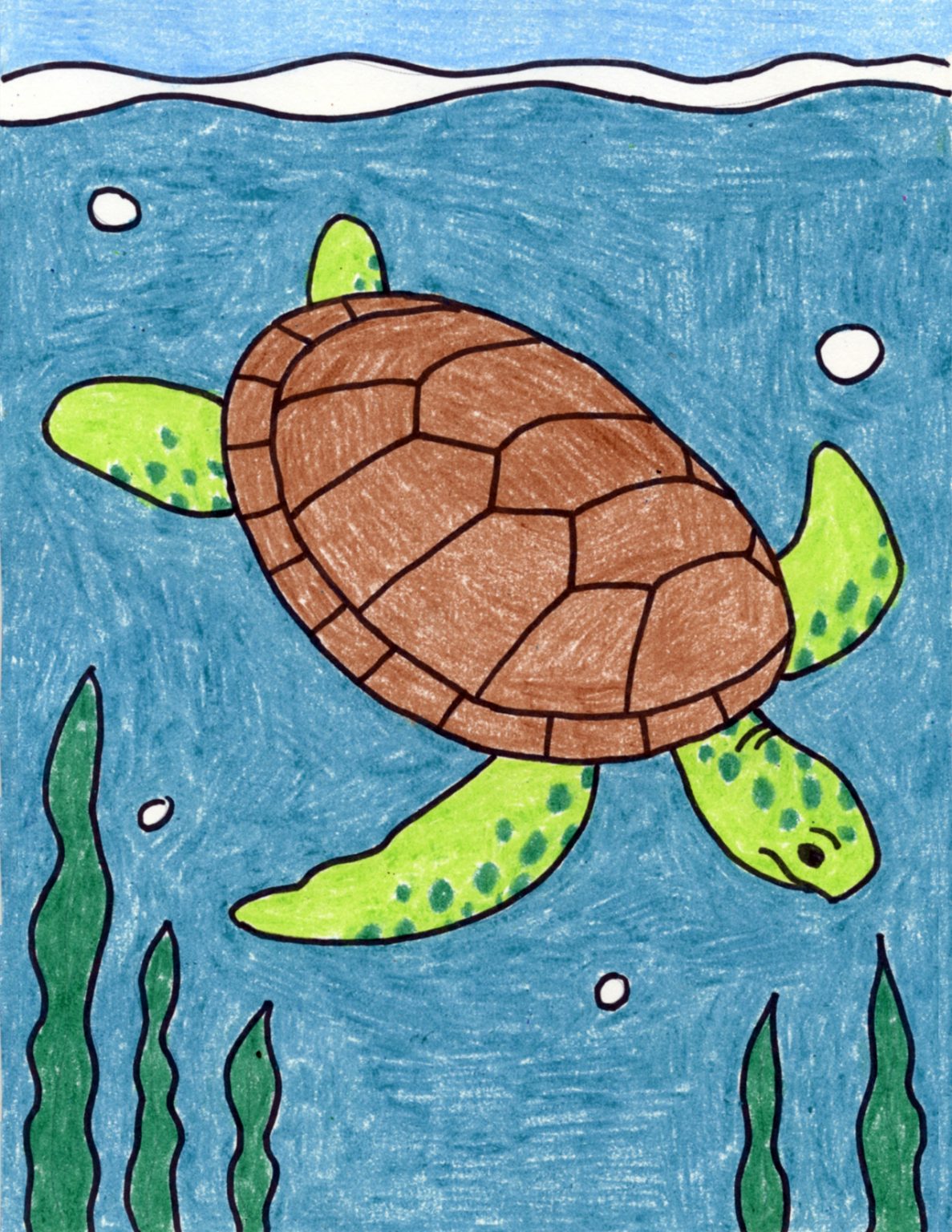

#Seaturtle drawings update#
Thus, an update on the marine turtle fauna of the eastern Ebro Basin that variably opened in the east during Eocene times is provided. The last one is identified as the only evidence of the Shweboemys subgroup in the European record, being distinct from the other known Osona County pleurodire Eocenochelus farresi, which is a member of the Erymnochelys group (same subfamily), from the younger Priabonian Sant Martí Xic layer. The description of two other more littoral–continental Eocene species is given: Trionyx sp., from an older layer of the same formation and the podocnemidid erymnochelyine, Cordichelys from a more basal layer of a middle Eocene (Lutetian) formation. Shell parameters indicate that the new species belongs to a branch of sea turtles including the Eocene Anglo–Franco–Belgian forms Argillochelys, Puppigerus and Eochelone (the shell of the latter was studied here for the first time) as well as Glarichelys from the Oligocene of Switzerland, all of them predating the worldwide living Miocene genera. It is the second cheloniid from Santa Cecília de Voltregà (Osona County, Spain), the first one being Osonachelus decorata from the same formation. is a new marine cryptodiran cheloniid found at the Priabonian levels (latest Eocene) of the Vespella marls member of the Vic–Manlleu marls formation. The Italian fossil represents the second evidence of a turtle swallowed by a shark in the fossil record and a direct evidence of the possible dietary preference of Cretodus, adding some evidence for discerning scavenging from predatory lifestyle.Įochelone voltregana n. Is discussed and compared with other fossil records of shark predation/scavenging and with lamniform shark-chelonioid turtle interactions in modern marine environment. Because of this, and because of their position in correspondence of the abdominal region of the shark, the turtle remains are interpreted as stomach content. Some of the bones show evidence of damages referable to bites and possible acid etching. Closely associated with the remains of the shark (estimated total length over 6.5 m) is a pellet-like accumulation of partially broken bones belonging to a large chelonioid turtle (about 2 m of estimated total length). The fossil is the most complete specimen of Cretodus so far discovered and includes 120 teeth, 86 vertebral centra and many placoid scales. The shark, dating back to the middle Turonian, is here ascribed to Cretodus and represents the first record of this genus in Italy.

In the nineties of the 20th century, a large and partially articulated skeleton of a lamniform shark was discovered in Upper Cretaceous hemipelagic beds of the Venetian Prealps of northeastern Italy. The new turtle specimens further complement the associated mammal remains in envisaging the Cessaniti assemblage as a mosaic of both African and Eurasian (Pikermian) faunal elements. Overall, besides its taxonomic significance, the Cessaniti chelonian assemblage affords the potential for important biogeographic implications, attesting that the lineages of Trionyx and Mauremys could have potentially used the Sicily–Calabria arch for their dispersal from Europe to Africa during the Tortonian. pliocenicus, the new Cessaniti specimens expand its geographic and stratigraphic distribution and further comprise the sole existing material known for this species, considering that its holotype and so far only known material is currently lost. Although the material is incomplete, it nevertheless permits a more precise identification for the pan-trionychid specimens, which are referred to the species Trionyx pliocenicus, as well as the pan-geoemydid, which is attributed to the genus Mauremys. The material pertains to three different turtle clades, i.e., pan-trionychids, pan-cheloniids, and pan-geoemydids.

We here describe turtle remains from the late Miocene (Tortonian) of Cessaniti (Calabria, southern Italy), an area that recently has been palaeogeographically reconstructed as being, at that time of the Neogene, directly connected (or at least rather proximate) to northern Africa, instead of Europe.


 0 kommentar(er)
0 kommentar(er)
